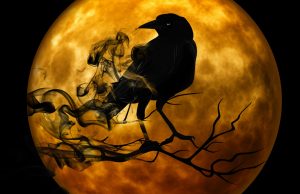 Happy Halloween! This is the time of the year not just for candy and pumpkin patches, but also for horror movie marathons, haunted houses, and seeking out the scary. Psychologically speaking, the typical response to a frightening or alarming stimuli is to “fight or flight,” to prepare to combat the stressor or escape it. So why is Stephen King a best seller? Why do haunted houses appeal? Why do some end up with nightmares, and others with an adrenaline seeking addiction?
Happy Halloween! This is the time of the year not just for candy and pumpkin patches, but also for horror movie marathons, haunted houses, and seeking out the scary. Psychologically speaking, the typical response to a frightening or alarming stimuli is to “fight or flight,” to prepare to combat the stressor or escape it. So why is Stephen King a best seller? Why do haunted houses appeal? Why do some end up with nightmares, and others with an adrenaline seeking addiction?
The nervous system is made up of the parasympathetic nervous system, or the part of our nervous system responsible for the body when it is resting and calm, and the sympathetic nervous system, or the part of the nervous system responsible for activating all of the body functions necessary in a “fight or flight” situation. When the sympathetic nervous system is activated, our body releases chemicals, called neurotransmitters and hormones, that help to prepare our body. These chemicals are the same chemicals that are released when we are happy and excited.
Humans are diverse, though, and the way one person responds to the flood of dopamine, adrenaline, and norepinephrine may be quite different from another person’s response. This is where the frontal lobe comes into play. The frontal lobe, which does not fully develop in a human’s brain until early adulthood, is responsible for maintaining the idea of “context.” This is why, no matter how scary the movie is, your brain reminds you that you are truly safe at home on the couch. This is also why the more realistic haunted houses tend to produce more realistic terror in their visitors.
The human brain enjoys stimulation, and for many, planned exposure to a frightening situation is a fun way to stimulate the brain, and also create a shared bonding social experience. For others, though, even with the knowledge that this is “pretend,” a scary scenario is too overwhelming for their sensory sensitivity. For others, such as those who have lived through trauma, being in this state of heightened arousal may lead to re-experiencing of the trauma, flashbacks, or dissociation.
As with most things, the key is in self-awareness, balance, and accommodation. For example, in Orlando Florida, Universal Studios is known for their Halloween Horror Nights. Yet just down the road, at Disney, Mickey’s Not So Scary Halloween is there for those who can’t handle the adrenaline. Finding ways to meet everyone’s emotional needs means more enjoyable activities for everyone. For more information on inclusion and accommodations, or for support, contact us! We are here to help.
